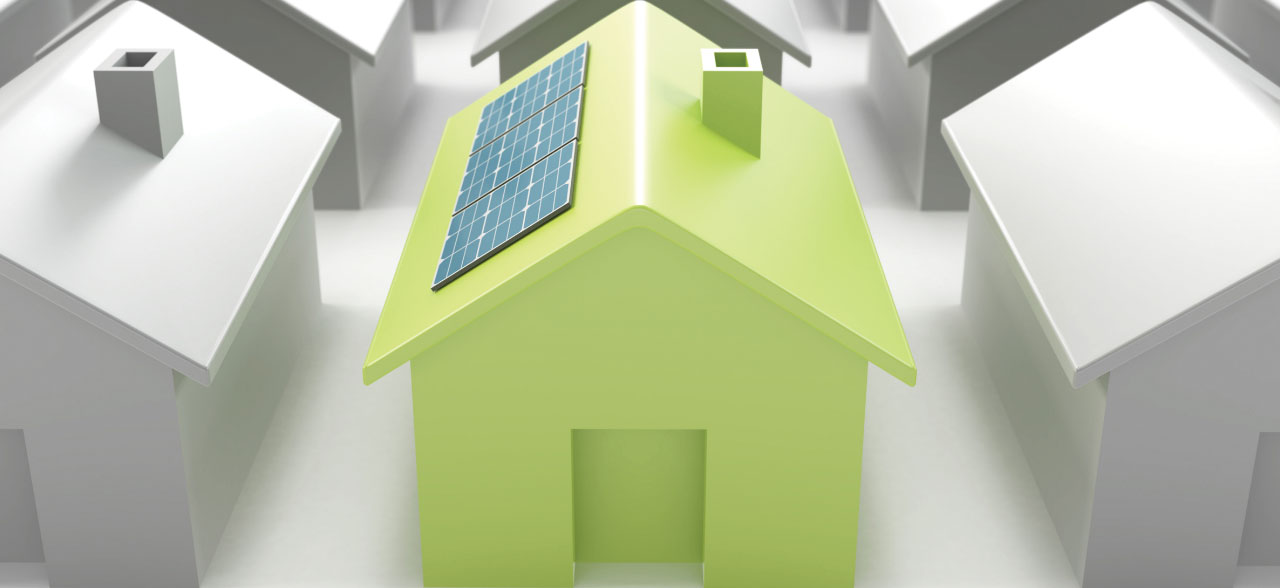Steering Indian REAL ESTATE towards a GREENER FUTURE
In recent years, the Indian real estate industry has undergone a notable shift, with a heightened focus on sustainability. This shift has been further sped up by the COVID-19 pandemic, driven by both environmental and economic considerations, as builders and developers are becoming increasingly aware of the importance of environmentally friendly buildings which are also becoming more cost-effective. The Indian real estate sector is now taking significant strides towards a greener future, with several notable examples of successful green building initiatives implemented by developers. These initiatives are not only helping to protect the environment, but they are also improving the quality of life for residents, making the real estate market more attractive to potential buyers and investors.


- Vaibhav Jatia
Managing Director, Rhythm ResiTel
In recent years, the Indian real estate industry has undergone a notable shift, with a heightened focus on sustainability. This shift has been further sped up by the COVID-19 pandemic, driven by both environmental and economic considerations, as builders and developers are becoming increasingly aware of the importance of environmentally friendly buildings which are also becoming more cost-effective. The Indian real estate sector is now taking significant strides towards a greener future, with several notable examples of successful green building initiatives implemented by developers. These initiatives are not only helping to protect the environment, but they are also improving the quality of life for residents, making the real estate market more attractive to potential buyers and investors.
According to IBEF, the real estate market in India is expected to grow to over US $1 trillion by 2030 and will contribute about 15% to GDP by 2025. To support this growth, the Indian Government has introduced several policy initiatives and tax incentives to encourage the development of green buildings. For example, the Indian Green Building Council (IGBC) has established a rating system that evaluates buildings on a range of sustainability criteria, including energy efficiency, water management, and indoor air quality. In addition, the Ministry of Housing and Urban Affairs jointly has launched Green Affordable Housing Program (GAHP), aimed at promoting sustainable and energy-efficient practices in the construction industry. This program offers technical support to developers and builders to help them construct eco-friendly homes.
Additionally, in recent years, there has been a significant increase in travellers visiting eco-friendly destinations and sustainable accommodations. This is because travellers are becoming more conscious of the impact they have on the environment and are seeking out destinations that are committed to sustainable practices. This trend is driving the demand for sustainable real estate development, including hotels, resorts and vacation homes.
Due to these factors, developers in India, including residential, commercial as well as hospitality real estate developers, are now incorporating various environmentally friendly and sustainable design features into their projects. These features aim to reduce the carbon footprint of the building and promote more efficient use of resources.
One of the key sustainable features being incorporated is the use of renewable resources, such as solar panels, to generate electricity, for example, installing solar panels for heating water or turning on LED lights that are energy-efficient. This reduces the building's dependence on traditional, non-renewable sources of energy and helps to minimise the environmental impact of the building.

Another way that many developers are embracing sustainability is by implementing water conservation practices into their construction projects, both commercial and residential. This can include implementing low-flow fixtures in rooms, rainwater harvesting, and implementing greywater systems that treat and reuse wastewater. By reducing water usage, developers can minimise the impact of their properties on local water resources and ensure that the property remains viable in areas with limited water availability.
In addition to incorporating sustainable features, many developers in India are also pursuing certifications such as LEED (Leadership in Energy and Environmental Design) and GRIHA (Green Rating for Integrated Habitat Assessment), which are internationally recognised green building certifications. Obtaining these certifications shows a developer's commitment to sustainability and provides assurance to buyers that the project has been designed and constructed with environmental sustainability in mind.
Furthermore, the use of sustainable materials is becoming increasingly important in the Indian real estate market. Developers are using materials such as bamboo, and recycled steel and concrete to reduce the environmental impact of their projects. In addition, many developers are also incorporating green spaces into their projects, with parks, cemeteries, and gardens becoming an increasingly common feature in new developments.

Finally, the implementation of electric vehicle (EV) infrastructure helps to encourage the adoption of cleaner forms of transportation. With the growing demand for sustainable living, developers are incorporating EV charging stations into their projects to meet the needs of the environmentally-conscious consumer. This move towards a greener future is not only beneficial for the environment, but it also adds value to the properties, making them more attractive to potential buyers. By promoting the use of cleaner and more sustainable modes of transportation, developers are contributing to a healthier and more sustainable environment and setting a positive example for the industry as a whole.
In conclusion, the shift towards sustainability in the Indian real estate market is being driven by a combination of environmental and economic considerations. The COVID-19 pandemic has accelerated this shift and provided an opportunity for the industry to re-evaluate its practices and make changes towards sustainability. Developers are now incorporating sustainable practices into their projects by focusing on energy efficiency, using environmentally friendly construction methods, and creating green spaces. The Indian government has also been supportive of this shift and has launched several initiatives aimed at promoting sustainability in the construction industry.
Hits: 1







